The Callanish Standing Stones in the Outer Hebrides, Scotland
One of the very special days of my cruise around the Scottish islands was the day we visiting the Callanish Standing Stones on the island of Lewis in the Outer Hebrides, Scotland.
From the first sighting of the town of Stornoway on Lewis the day had a magical feel about it enhanced by the quaint cottages which nestle along the shoreline.

The landscape had a rugged beauty with the inclement weather adding to the atmosphere in our journey back thousands of years to witness the remains of a remarkable site.
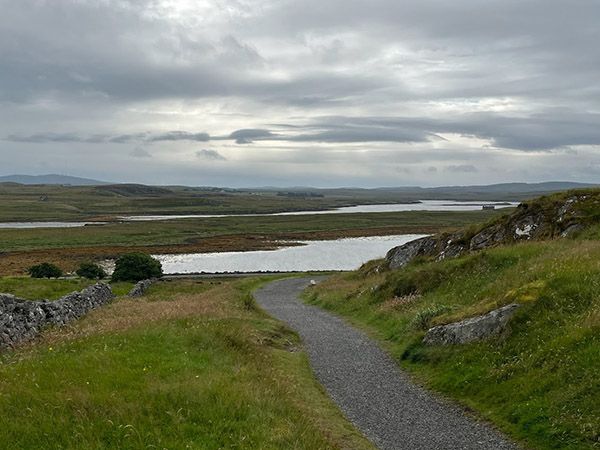
Approaching the stones you could almost forget you were in the C21st so fascinating was this site even though, or perhaps even because, surrounding the stones are the crofters' cottages also dating back into history. A croft is a small plot of land rented from the landowner for agricultural purposes. A crofter is the person living on and working the land.
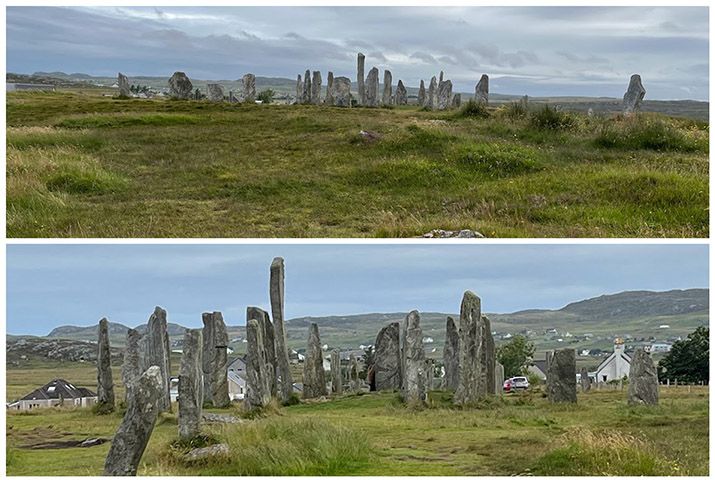
The Callanish Stones are an arrangement of standing stones placed in a cruciform pattern with a central stone circle. They were erected in the late Neolithic era, and were a focus for ritual activity during the Bronze Age. They are near the village of Callanish (Gaelic: Calanais) on the west coast of Lewis in the Outer Hebrides, Scotland.1
And up close to these remarkable structures - you can touch them and carry yourself back thousands of years to when they were placed in this position towards the end of Nealothic times about 6000 years ago. At this time humans were just beginning to experiment with making pottery!
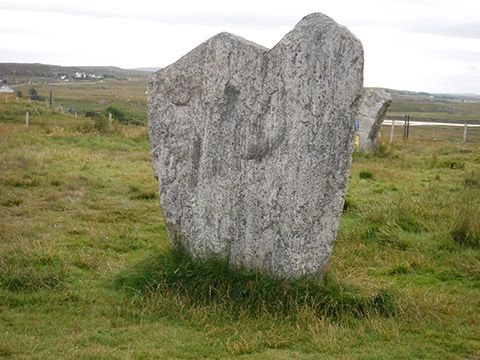
Stonehenge in Wiltshire, England, which many of you would have seen, dates to back to about 3000BC-2000BC which means that the Callanish Stones were in place for about 2000 years before Stonehenge. What is amazing is that archaelogical evidence suggests that there was some kind of communication between the community from the Outer Hebrides and Stonehenge indicating that these communities were travelling around in "boats" along the coastlines and perhaps even further - who knows- it is just so exciting to think along these lines.
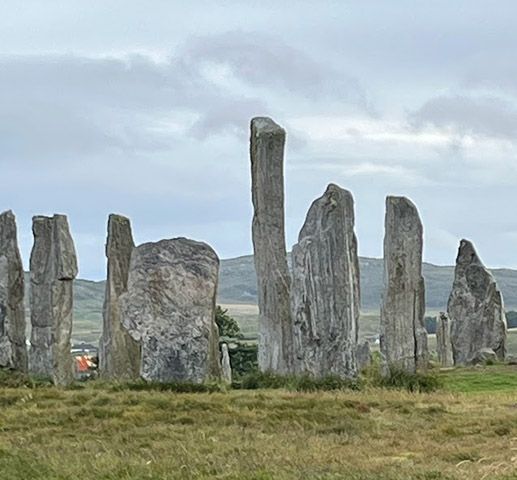
In the late Neolithic era, the stones appear to have been a focus for ritual activity during the Bronze Age. The Callanish (also known as Callanais or Calanais in its non-Anglicized form) consist of a ring of 13 separate 12-foot-tall chunks of Lewisian gneiss pillars arranged in a cruciform pattern around a 14-foot central monolith. Gneiss is a complex crystalline rock that ranges from 1.7 to 3 billion years old. It is the oldest rock found in Western Europe and one of the oldest rocks in the world. The way that this central monolith is nestled within the circle makes it seem as though it is being guarded by the stones.2
If you would like to learn more about these remarkable structures please follow the link below.
While on Lewis in the Outer Hebrides I did try phoning my Scottish ancestors but no-one answered!! Guess they must have been busy!!
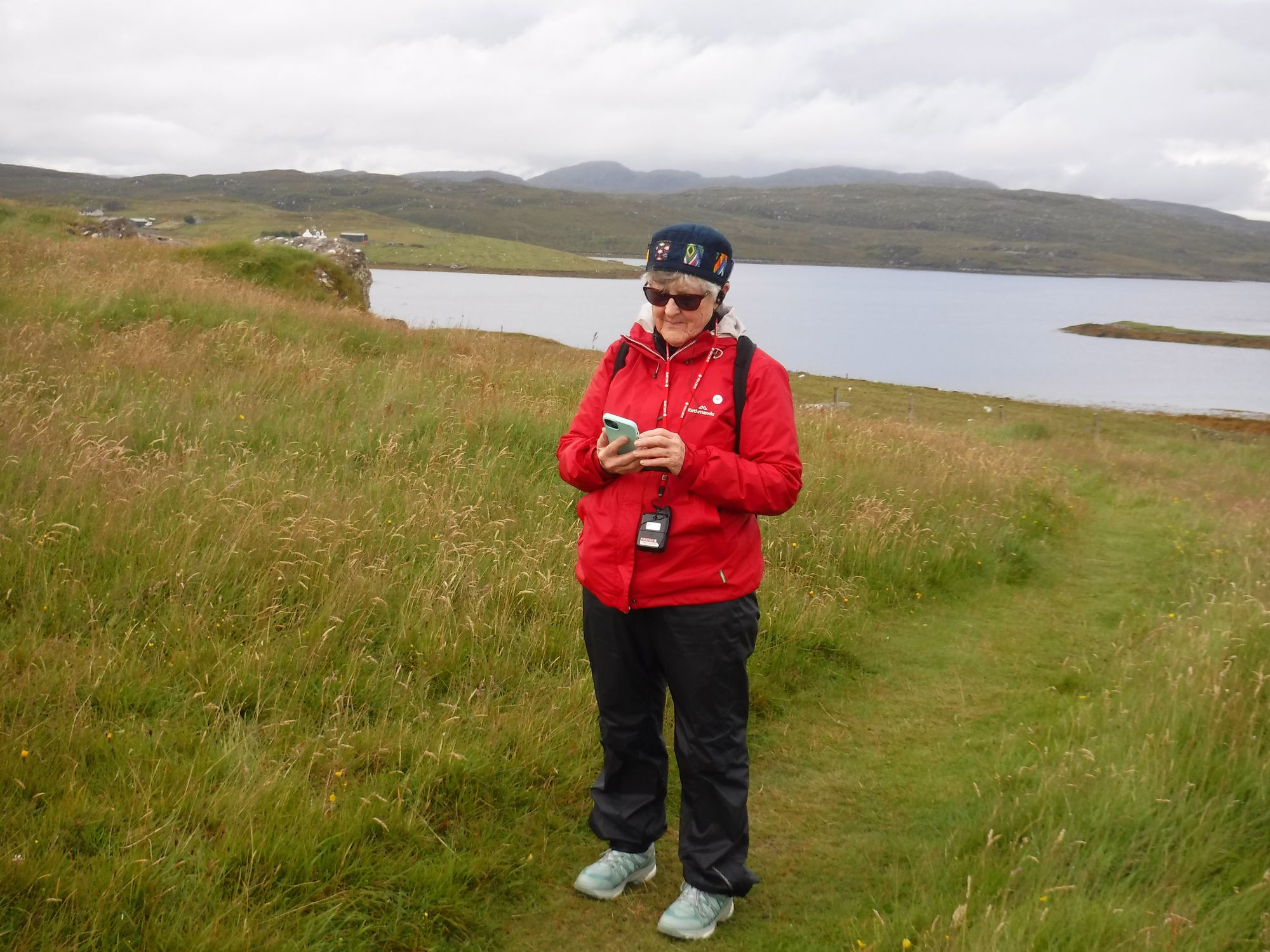
Tomorrow, an account of the other forever memorable day from the cruise when we visted the Inverewe Garden in Wester Ross on the west coast of the Scottish Highlands
Credit
1.en.wikipedia.org
2. nathab.com/blog/callanish-standing-stones
